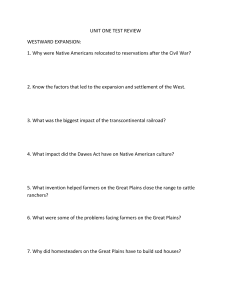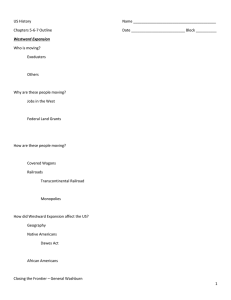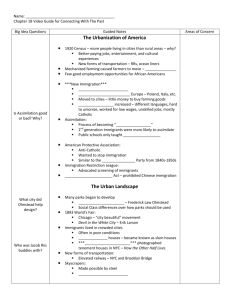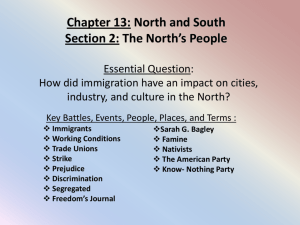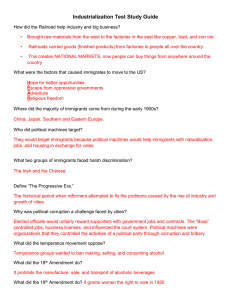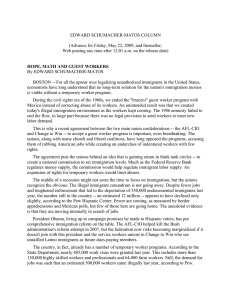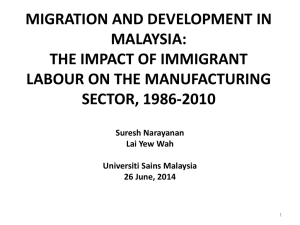Labor After the Civil War
advertisement
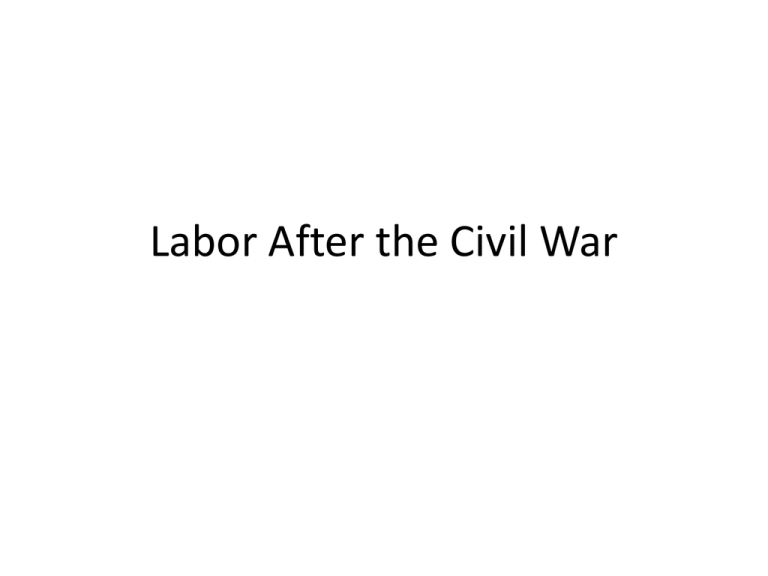
Labor After the Civil War Population and Labor Force (in Millions), 1870–1920 Population is increasing, as is immigration. The labor force is also increasing faster than population up until WWI. Most of this labor is not working in agriculture. Why is population increasing? 1. Birthrate or fertility is declining for blacks and whites. 2. Death rates are declining faster. (Increase in life expectancy) 3. Why? Decline in Birthrates • Economics of family-cost vs benefits • Factors that increase cost– Compulsory schooling laws • Factors the reduce benefit – Urbanization limits the contribution of children to family income (children work on farms earlier) – Land and machinery become more important than labor • Increase in income changes preferences for children. – Quality vs quantity Decline in Death rates • Better public health measures – Improved sanitation and sewage disposal – Improved water supplies • Chlorination, piped water systems. U.S. Immigration and Business Cycles, 1865–1914 Immigration increases when income is high and goes down during recessions. Where do people come from? Origins of Immigrants, 1820–1920 (in Percent) More immigrants come from central, eastern and southern Europe after 1890. Reflects rising incomes in Western Europe and lack of economic opportunity and political unrest in other parts of Europe. As before immigrants tend to be unskilled labor. When education and schools are taken into account there is not much evidence of discrimination in the labor market. What happens to wages? Real Earnings of Nonfarm Employees Series differ because the first does not account for unemployment. Notice the upward trend continues after 1890. Consistent with increases in demand for labor being larger than supply. However, this does not mean all types of labor had equal gains. Did immigrants effect income of US born workers? • US born unskilled workers saw immigrants as a substitute and cause of wages not rising as fast as they could have. • US skilled workers saw unskilled workers as potential substitutes, reducing the demand for skilled labor. • Both opposed immigration. Other gains made by labor • Drop in hours worked per day and days worked per week. • Reduction of child labor. – State regulation – Increase in compulsory schooling laws Unions • As firms grew in size, workers organized to form unions to bargain more effectively for higher wages and better working conditions. • Union is basically a cartel where the members are workers rather than firms selling a product. • To be effective all workers in the industry have to be members. Because of the incentive to free ride, they will not join unless legally compelled to do so. Unions • Firms opposed unionization both in the courts and at the firm level • Violence on both sides was common during the early part of the movement. • Were unions responsible for labors gains during this period? Union Membership, Selected Years Union membership is small during this period. Probably more effective at lobbying to change state laws to restrict length of working day and child labor.

